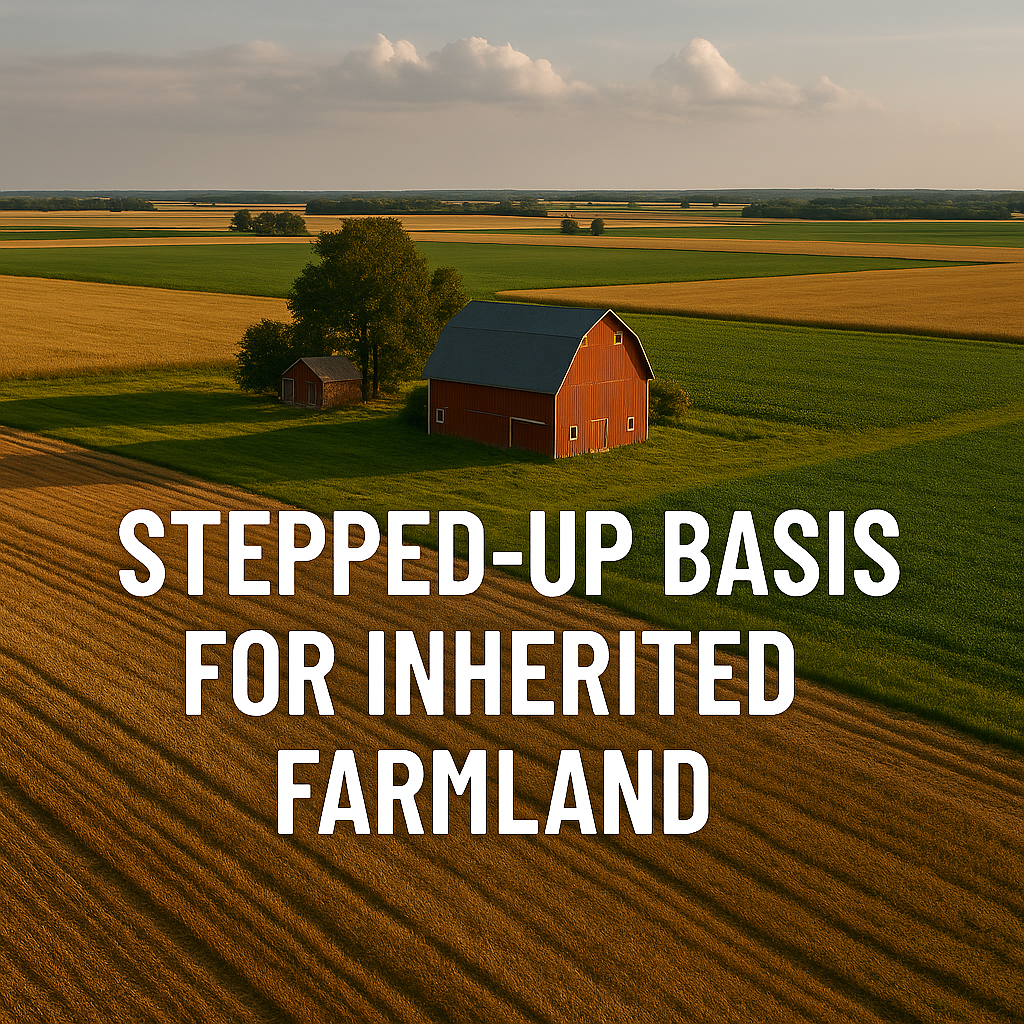If you inherit a farm (or any appreciated asset), one tax rule can save you a pile of money: the stepped‑up basis. In short, your cost basis is “reset” to fair market value on the date of death—so decades of appreciation can vanish from the capital‑gains equation. See the IRS rules in Publication 551 and the Internal Revenue Code at 26 U.S.C. §1014.
What “Stepped‑Up Basis” Really Means
Your basis is what the IRS says you “paid” for the property. When you sell, you’re taxed on the difference between the sale price and that basis. With an inheritance, basis is usually stepped up to fair market value (FMV) at death (or an alternate valuation date if elected). See the IRS FAQ on inheritances here and Topic 703 on basis here.
Example: Grandpa bought 160 acres for $80,000 in 1975. He passes in 2024 and the land is worth $2,000,000. Your new basis is $2,000,000. If you sell at $2,050,000, you’re taxed on roughly $50,000—not $1,970,000.
Why It’s a Big Deal for Farmland
Gifts vs. Inheritances: Don’t Mix Up the Rules
Depreciable Pieces Matter (Bins, Tile, Buildings)
When you inherit improvements, each can get its own stepped‑up basis and new depreciation schedule. CALT outlines allocating value to tile, fences, and fertility.
Entity & Titling Nuances
Land held in an LLC or co‑owned between spouses may get partial or member‑level basis adjustments. CALT explains joint tenancy and community vs. non‑community property differences.
Action Steps for Heirs
1. Get FMV at death (appraisal/valuation).
2. Gather records—leases, improvements, conservation contracts.
3. Meet with a CPA/attorney before listing or signing a buy‑sell.
4. Decide: sell, lease, or hold—run numbers using the new basis.
Action Steps for Current Landowners
1. Inventory assets & current basis.
2. Review your estate plan—what should pass at death vs. be gifted now?
3. Check entity structure to ensure step‑ups apply as intended.
4. Communicate with heirs to avoid confusion later.
Bottom Line
A stepped‑up basis can erase decades of appreciation and unlock smarter decisions for heirs. But it only works for you if you know it, document it, and plan around it. Need a land valuation or a strategy session with your attorney/CPA? Whitaker Marketing Group can help you pin down FMV, structure the sale, and market the property when the time is right.
515-996-5263 |✉️info@wmgauction.com
